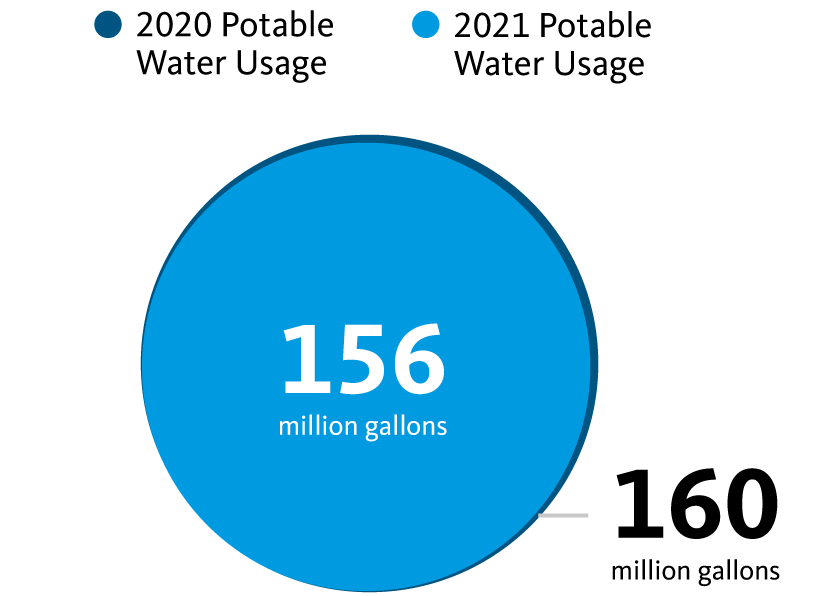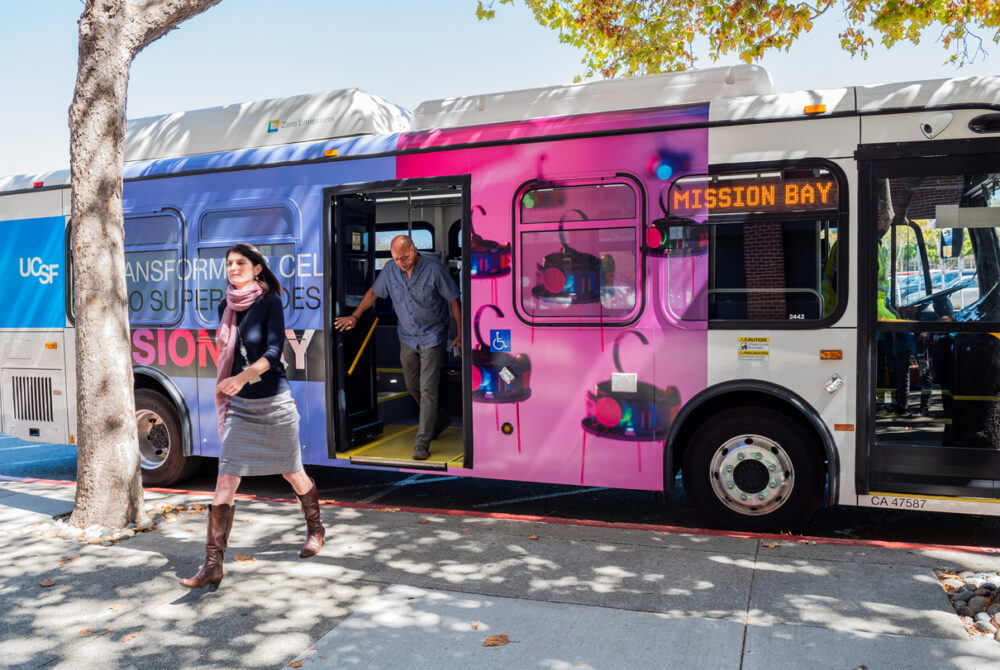UCSF saw many achievements in fiscal year 2020–21 around energy and climate change. UCSF achieved a 6% reduction in emissions, exceeding the goal to meet the 1990 levels by 2020 for scopes 1, 2 and 3 emissions, with significant impact from reduced business travel. Building energy use was reduced by 8% for electricity and 9% for natural gas.
Overall, UCSF’s energy use intensity target of 2% was exceeded, with utility consumption down 3.4% due to reduced occupancy and increased energy efficiency. Two Master Site certifications (Parnassus and Mission Bay) were submitted to the U.S. Green Building Council. The campus also implemented an ultra low temperature freezer replacement pilot with a projected energy savings of $1.2 million over 15 years.

CLIMATE PROTECTION – EMISSIONS
In 2020, scope 2 emissions decreased significantly from the prior year because of cleaner electricity supplies, as UCSF Health transitioned to UC’s Clean Power Program for Mission Bay Hospital and the Osher Center. Meanwhile, scope 1 emissions, which primarily came from the central utility natural gas plant, went down by 5%, likely the result of reduced onsite energy usage. Scope 3 emissions decreased significantly due to the ban on business travel, yet emissions from commute increased due to a reduction in employees using public transit for safety reasons. (At the time of data collection, campus greenhouse gas emissions were not yet third-party verified. Updates will be made, as needed, in future reports.)
ENERGY – RENEWABLE ELECTRICITY GENERATION
ENERGY USE INTENSITY (EUI)
UC San Francisco saw a decrease in its EUI in the calendar year 2020.
FOOD
Retail food services were intermittently operational, so there was limited opportunity to make improvements toward sustainable food. Due to shortages during the pandemic, retail vendors faced challenges with food procurement and rising costs. Despite these challenges, UCSF achieved 42% sustainable food spend.
Green building
UCSF’s real estate department is considering committing to LEED Gold certification as the campus standard. The two Tidelands Housing units were UCSF’s first all-electric buildings.
13 Gold, 6 Silver and 5 Certified
Total number of LEED certifications
procurement
At the time of this report, sustainable procurement data was not yet available for fiscal year 2020–21. Fiscal year 2019–20 data is available in the 2020 Annual Sustainability Report.
Sustainable Building & Laboratory Operations
total assessed research labs
Due to staff density restrictions in research labs during the pandemic, green lab outreach and engagement efforts were limited during fiscal year 2020–21. Sustainability efforts were focused on fume hood hibernations and a pilot ultra-low-temperature Energy Star freezer replacement project.
Transportation
Due to COVID-19, UCSF’s shuttle system operated at lower capacity, using primarily the smaller diesel and gas shuttles to match the decreased demand.

of UCSF students and employees, including those at UCSF Health, are utilizing alternative commuting methods

EV charging stations at UCSF and UCSF Health for 2020-2021

of light-duty vehicles acquired in 2021 were electric (zero-emission) or hybrid vehicles
WATER

UCSF reduced its water usage in fiscal year 2020–21 compared to the year before. This year’s report illustrates the difference in water consumption between fiscal year 2019–20 and fiscal year 2020–21 instead of measuring progress toward the 2025 goal.
ZERO WASTE – GENERATion
The pandemic created more landfilled waste (which increased 14%) due to extra cleanings, daily use of personal protective equipment and the movement back toward single-use items versus reusables.
ZERO WASTE – DIVERsion
UCSF saw its diversion rate drop for the first time in 10 years as a result of the pandemic, with fewer staff on campus, the cancellation of events and the closure of food establishments. Sustainability staff shifted its focus to the lab community as its waste was the largest bulk of the garbage going to landfill. For example, UCSF started a pilot program to look at recycling lab plastics, which will help UCSF move closer to the zero waste goal.
 Sustainability Annual Report 2021
Sustainability Annual Report 2021
